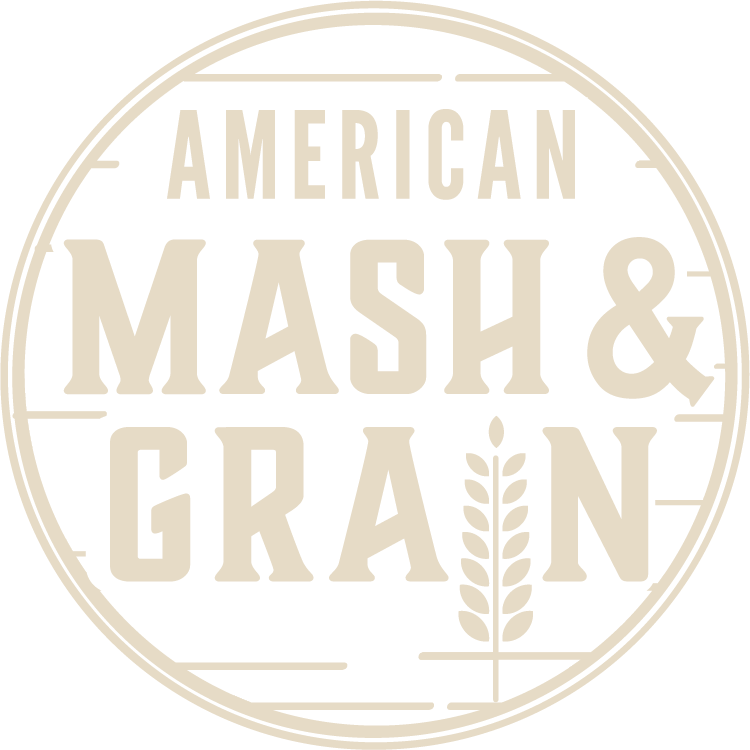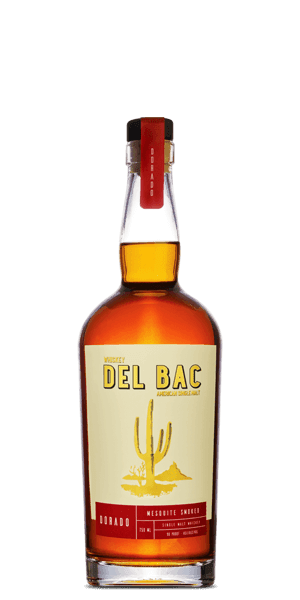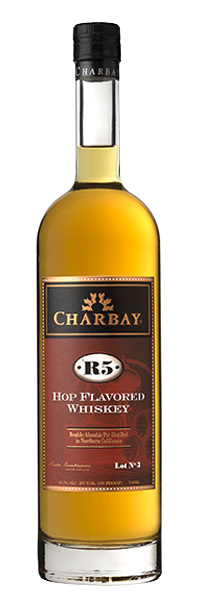American Whiskey
By Devin Ershow
Whiskey has been surging in popularity across the world over the last couple decades, quickly becoming one of the most, if not the most popular spirits. That said, many of those embracing the awakening of this modern whiskey renaissance are left confused by the history and nuance within the broad category. What is the difference between Irish whiskey and Scotch? What’s the difference between a single malt and a blend? Even the word “blend” can mean a number of different things, depending on context. If you were to ask the everyday consumer what American whiskey is, they are likely to give you one of two answers: “I don’t know,” or perhaps more likely, “bourbon.” The latter is both correct and misleading. Bourbon is an American whiskey, and the most popular style of American whiskey today, but as we like to say at American Mash & Grain, whiskey is about stories … and bourbon is not the whole story.
Whiskey in general is thousands of years old, invented by the Irish and first documented in the 12th century. For much of whiskey’s storied history, Irish whiskey maintained dominance across the world markets, controlling upwards of 70% of that market share through the dawn of the 20th century. The Scottish were heavily influenced by the Irish, and between the two of them they have inspired whiskey cultures and traditions across the globe. American whiskey was heavily influenced by Irish, Scottish, and German immigrants in the colonial period, and continued to be shaped by Irish tradition in large part due to a mass migration of Irish immigrants to the United States in the middle of the 19th century.
In America, whiskey started off being made mostly in small batches by farm distillers who distilled their excess grain into whiskey. The industrial revolution gave rise to larger urban distilleries on the east coast that focused primarily on producing rye whiskey (since rye grew better in eastern soil than the barley their European ancestors were accustomed to). As the country expanded and distillers voyaged west, they found the soil better suited for growing corn. Thus, bourbon, a corn based whiskey, took root and began to flourish off the banks of the Ohio River. Rye remained the most dominant style of American whiskey until Prohibition ravaged the industry in 1920. Following repeal, a number of legislative acts created a massive financial barrier to enter the distilling industry, limiting opportunity to only the few who could afford it. With the subsidization of corn in 1933 and the declaration of bourbon as a distinctive product of the United States in 1964, bourbon took center stage in America while other styles of whiskey faded off into the wings.
Therein lies the confusion as to what ‘American whiskey’ is: for the better part of a century, it has been limited to being just one thing. Right now, American whiskey is a catch-all term that applies to any American-made whiskey that doesn’t meet the standards of one of the defined categories like bourbon, rye, wheat or malt. If you don’t associate the words American whiskey with bourbon, then you likely carry a more negative connotation with the expression. American whiskey has also been used to define blended products that mix cheaply made whiskey with neutral grain spirits to create a lighter, less expensive, less flavorful product. This style took off in the sixties and seventies as consumers drifted more towards vodka, gin, and other lighter, less robust spirits. American whiskey is and can be so much more than what we have known it to be. America is less than two hundred and fifty years old. When compared to the thousands of years of whiskey’s existence, that doesn’t feel like much more than a comma in the middle of a sentence. Not to mention the fact that for nearly half that time, American whiskey has been locked in a box. The hundreds of years of history and tradition that we have built upon thus far is simply a rough draft. The story of American Whiskey has really just begun.
This most recent whiskey boom is thanks in large part to the American craft whiskey movement. The new millennium slowly saw changes in state legislations that have slightly eased the financial barrier of entry forged in the ashes of prohibition. For the first time in generations, small business entrepreneurs were granted the opportunity to write the next chapter of the story. We launched American Mash & Grain nearly two years ago on July 4th, 2020. In doing so, we hoped to not only become more intimately connected with the whiskey community, but also to help expand the profile of this craft movement. We have been honored and humbled by the conversations we have had and the people we have been lucky enough to meet. We have spoken to folks who have quit their jobs, emptied their savings, and sold their houses to make their dreams come true; people who have worked multiple jobs, hustled and bargained to get a chance to get their hands dirty doing something they love. And all of these people, men and women, from different backgrounds, different landscapes, different points of view, are all united around one thing … whiskey.
These distillers, through true grit and determination, in the face of a market that was stacked against them, have persevered to show us that bourbon doesn’t have to be made in Kentucky. It can be made anywhere in America. It doesn’t have to taste the way you’ve been conditioned to expect it to. Rye whiskey has been revived and is starting to thrive once more, and a new style of whiskey, American Single Malt, through the formation of the American Single Malt Commission and years of hard work and lobbying, is on the precipice of being standardized on the federal level.
None of this is meant to be interpreted as a knock on Kentucky bourbon. Kentucky bourbon is delicious and bold, and the legacy brands that produce them continue to represent some of the best in the business. There is a reason why bourbon is the second-best-selling whiskey across the world behind Scotch. That said, nearly a hundred years with no domestic competition cultivates complacency. In talking with craft distillers, the one thing we’ve heard again and again is that craft brands don’t feel they are competing with other craft brands. They are all collectively competing with the large industrial legacy brands, and therefore they cannot afford to be complacent. They cannot afford to simply replicate the status quo. They’ve had to innovate, to experiment, and push the boundaries. In the face of stark critics who claim that terroir can’t exist in distilled spirits, they are partnering with agricultural colleges and state programs to discover the impact that grain varietal has on sensory analysis. They are planting their grains in different soils and climates to see if the stress of the environment and topographical elements change the expression of the distillate. They are building unique rickhouses and barrel rooms, playing with temperature control, humidity control and tracking the impact barometric pressure and oak management has on the aging process. The answers to some of the questions these craft distillers are asking may not be known for years or generations to come, but the work has already started. That means that the sky's the limit in terms of potential for what American whiskey can be in the future.
It is this spirit of innovation that excites us the most. Whether it suits your personal tastes or not, American whiskey has become more diverse now than maybe it’s ever been before. And within this ever expanding variety of choices, aromas and flavors, we believe that the basic American whiskey category may be the bright star for the future. Impressed as we are by the achievements of the American Single Malt Commission, and recognizing that a federal standardization lends credit to a category that currently does not exist, standardization naturally creates restrictions you have to stay within. While the standards proposed by the commission leave plenty of room for interpretation and exploration, there are some, like limiting the grain exclusively to malted barley, that cap how high the ceiling can be and restrain the category to something akin to single malts that already exist in other countries. The vague nature of the ‘American whiskey’ designation is in part why it’s been given a bad rep to this point, but the latitude it gives the producer also creates the widest range of possibilities to push the concept of American whiskey forward.
The unyielding pursuit of new information and techniques goes beyond cramming more bottles onto the shelves. In working with local farmers and malt houses, the craft movement is breathing life into agricultural advancements that weren’t there before. New kinds of stills are being designed and fabricated. More and more barrels made from different types of wood with different treatments are being hammered together in cooperages. This is creating opportunities and jobs across the country. The limitless advancement of American whiskey will only continue to benefit the nation at large.
From a flavor perspective, what could be more exciting? Playing with all of these elements means that there are aromas, flavors and textures that no one has ever tasted before. If done by the right people, with the right ingredients, the right way, who is to say that bourbon remains king forever. We have already seen some craft brands looking to change the reputation of American whiskey. Stoll and Wolfe, stewarded by Erik Wolfe and the late and legendary Dick Stoll, started off blending bourbon and rye whiskey together to create their American whiskey. FEW Spirits under the leadership of Paul Hletko, former President of the American Craft Spirits Association (ACSA) releases an American Whiskey that is a blend of bourbon, rye and a cherrywood-smoked malt whiskey. More and more distilleries are releasing American whiskeys that allow them to challenge conventional expectations and release products that are new and exciting for their customers.
American whiskey has never been one thing, and it will never be just one thing. In that sense it is like America itself. A melting pot of ideas contracting and expanding as we resolve to write our narrative together. A genre blurring anthology being written and revised by individuals seeking to find a shared expression. We stand behind the culture, craft, and passion of America’s small craft distilleries as they continue to write the next chapter and carry the story of American whiskey forward.




